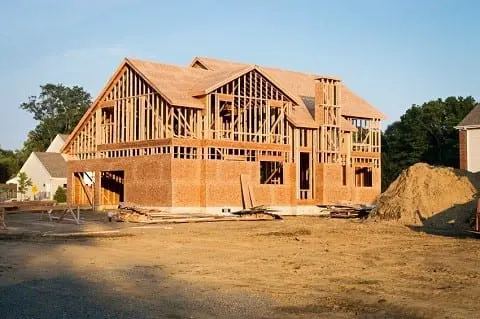
A deep understanding of land and property rights can save your clients from a lot mismatch, and help their dreams come to life.
It’s natural for your clients to be excited about building a new home, but in their excitement, they might overlook a critical first step: finding the right home site. What they don’t know about land can come back to haunt them later. As a knowledgeable Realtor, you can help them avoid disappointment.
Once homebuyers have identified where they want to live, they need to find out what’s available in that location. If a new-home community is on their radar, be prepared to tell them if a large number of lots are coming online in the next 18 months.
Chad Baker, a broker with RE/MAX Advantage Plus in Lakeville, Minn., periodically checks with the city’s planning department about proposed new communities, roads and sewer extensions.
Approximately 80 percent of prospective buyers do an online search first, says Jan Green of RE/MAX Excalibur Realty, Scottsdale, Ariz. But in Green’s opinion, they don’t do enough advance planning, which could result in a home whose rooms are too small or focused on the wrong views.
Lifestyle also plays a factor in choosing the right lot, so go over their preferences before choosing a lot. Would your client prefer a view of the green belt near their community? Do they want to have only one neighbor? Two? Is a park close by and how close do your clients want to be to it, asks Terre Steinbeck of Rodeo Realty in Beverly Hills, Calif.
“You want to be close to the park so you can walk there, but not across the street from it,” she says. “Remember, that’s where your neighbors are going to be with their kids every weekend and on every holiday.”
Restrictions May Apply
Sandy Neumann of Neumann Realty Corp., Jacksonville, Fla., says the size of the home, the footprint and building envelope must be considered along with setbacks and easements.
“Zoning requirements can dictate how many feet must be allocated between the road and the front and sides of the home,” Neumann says. “Easements may also be in place for local utility service access.” Buyers should review a detailed site plan with the builder before selecting a design.
Steve Sanders, president of LotNetwork.com, a website that brings land sellers and buyers together, says it never hurts to get the opinion of a builder or architect: “[The buyer] may not be able to appreciate the problems that could occur because of elevation changes on the site or the expense they’re going to have with grading and water control.”
Neighbors can be an excellent source of information about building requirements and if the land is low-lying or prone to flooding, Neumann says. If the water table won’t allow a 10-foot basement, the client needs to know that before they start planning a below-ground man cave.
Diane Saatchi, vice president of Saunders & Associates Realty in Southampton, N.Y., says many buyers don’t understand how covenants and restrictions can affect what is built in a community. For instance, asphalt roofs may be prohibited in favor of more expensive wood or clay roofs.
Saatchi, who sells oceanfront properties, always tells clients “that building on the water is not for sissies. There are all kinds of restrictions and many government agencies figure into it. You have to get a variance from one or the other, which could take years.”
In Arizona, buyers frequently encounter washes — water runoffs that need to be re-engineered. “You can’t just divert them on your own,” Green says. “It takes a lot of due diligence and aerial searches and preliminary research with the city.”
Don’t Assume Full Disclosure
Green issues a Buyer Advisory and a Land Advisory to her clients. “If there’s a disclosure available from the seller, we issue that as well. But with all the foreclosures we’ve had in the past, you don’t always get [full] disclosure, so buyers have to do their due diligence up front.”
Contracts approved and used by the state Realtor association generally include an inspection clause (also known as a due-diligence clause) so that buyers have an opportunity to check out the property before the purchase is finalized. However, you should caution clients that banks and sellers sometimes shorten the time frame to have such inspections completed. Advise them to review contract dates and terms carefully with their attorney.
Wayne Homes, an on-your-lot builder based in Uniontown, Ohio, does a complimentary home-site review and can recommend a soil scientist to have the soil tested prior to purchase, says Jen Collingsworth, regional vice president of sales. “We’ll do that if it’s a large parcel of former farmland, just to make sure that it’s buildable and compatible with the sanitary system,” says Collingsworth.
Soil testing isn’t always required before purchasing a lot, but it may be required prior to construction, says Neumann. Soil tests will indicate if the ground is compact enough to support the weight and foundation of a home.
If a septic system is being installed, it’s typical for an engineer or wastewater-treatment system designer to identify the best location via a soil test.
Testing is a must in areas where there is a significant amount of radon in the soil or groundwater, says Saatchi. It’s also critical if underground oil tanks were on the property or if it was previously used for farming.
By arming clients with the right information at the start of their property search, Realtors minimize the possibility of a house/lot mismatch. As Collingsworth puts it, “Some people purchase a lot and then come to realize that the home they really want is not going to work on that property. They need to make sure they do their research so that their dream can come to fruition.”

